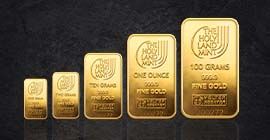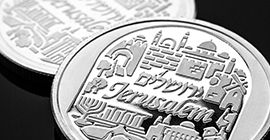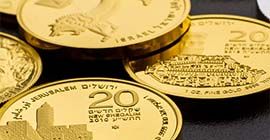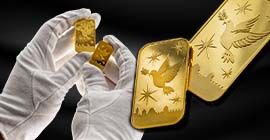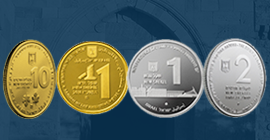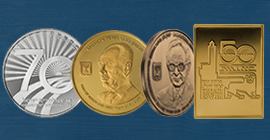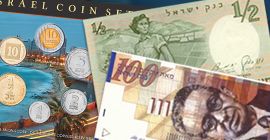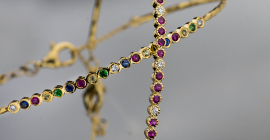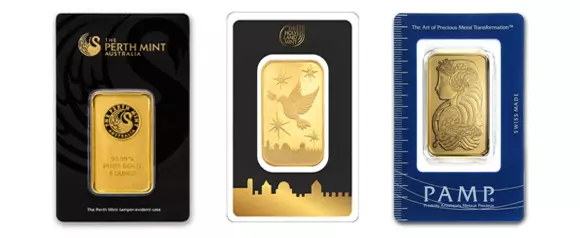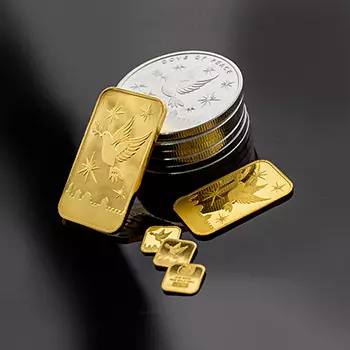The Price Of Gold Is At An All-time High - What Experts Predict And Where Do We Go From Here?
Gold investors around the world watched in amazement at the new record price of the glittering metal. The corona crisis and the global economic upheaval have supported the breakout of the $ 2,000 symbolic ounce per gold ounce, and experts estimate that the sharp jump in prices will continue even beyond that.
In the first week of August, after many months of continuous and rapid rise, gold broke the all-time record and crossed the symbolic continuum that was never broken - $ 2,000 an ounce.
In this article, we will explain why there is such a sharp jump in the price of gold, we will try to assess the reasons that support a further rise in prices and we will also address the risks that obscure the yellowish metal trade. Let's start by saying that according to many estimates, breaking the $ 2,000 level is the beginning of a climb to higher levels.

Gold breaks the all-time record. Change in value of an ounce of gold, in dollars, between the years 2000-2020.
The corona crisis is sending investors back to gold
The rise in the price of gold began about a year ago, following the trade war between the United States and China and signs of a global slowdown. With the outbreak of the corona crisis and rising fears of a historic-scale recession, the trend has accelerated. Business closures, house closures and oppressive uncertainty have led many investors to fortify themselves in a property that has always been considered the safest haven in times of crisis: gold bullion.
From mid-March to early August, gold soared from about $1,500 to over $2,000 an ounce. Why did this happen?
- The corona crisis is causing a steep decline in growth in all countries and in some even a recession. The halting of consumption, exports and imports, the borders and markets closed, rising unemployment and the lack of knowledge of how long the corona will continue to threaten world economies - raise fears that it will take a long time before economic growth returns to pre-corona levels.
- To deal with the severe crisis, which some believe is the greatest since the Great Depression of the 1930’s, governments are initiating huge bailout plans. Trillions of dollars are poured into the markets and even the citizens themselves. The printing of unlimited money increases the fear of an outbreak of inflation and imposes a heavy burden of debt on governments and future generations.
- Interest rates in the United States and many countries around the world are at zero. In Israel, too, the interest rate is at a historic low of 0.1%. As the crisis continues, interest rates are not expected to rise - so investing in deposits and savings is expected to yield poor returns.
- Despite the severe crisis, there have been sharp rises in some capital markets and especially in technology stocks in the United States. The ratio between technology companies' revenues and stock prices has soared to dangerous heights that have not been seen since the dot.com bubble in the early 2000’s. There is concern that we are predicting an inflation bubble, which stems from the fact that investors have nowhere to put their money at a time when interest rates are zero. Of course such an oath may shatter violently at some point.
Among the factors for the strengthening of gold even before the outbreak of the corona crisis, the countries that increased the purchase of ingots stand out. Decades after the gold standard was abandoned and governments stopped buying it and even sold some of their inventories - China and Russia returned to the gold market and attracted other countries, including Turkey, Iran, Kazakhstan, Poland and Hungary.
- The dollar has plunged to its lowest level in the past year and there are many estimates that the downward trend will continue. At the same time, various countries led by China and Russia are promoting de-dollarization moves that include the sale of assets in dollars and the purchase of gold, which we will expand on later.
Under these conditions, experienced and careful investors choose to put their money in gold, which over the years has proven its uniqueness as an investment haven that maintains stability and even strengthens sharply in times of crisis.
From right to left: Lady Fortuna, Dove of Peace and Perth Mint bars.
What do the experts expect? How high can the price of gold reach?
As we have seen, the price of gold has been soaring in recent times and raises the question: Are we approaching a peak and falling prices - or will gold continue to climb to new highs? Many experts explain that the rise in the price of gold is not expected to stop soon.
With the break in the gold price record, Commerzbank's economists wrote that "the momentum we are seeing now suggests that the jump will continue and gold may reach the $ 2,000 high in the coming days." Indeed, gold crossed that price within a few days. The Bank of America predicts that by the end of 2021, the price of gold will reach $ 3,000 - a 50% jump from its current price. "When economic output shrinks sharply, government spending climbs and central bank balances double, world currencies are expected to face pressure and investors will turn to gold," the bank estimates.
And there is another important point. If you look at inflation, the price of gold has not yet broken the 2011 record in real terms. Similarly, the price of gold is much lower than the peak recorded in the early 1980’s. That is, if gold compares its real price to that of 2011 or even earlier - it is expected to rise further.
Dove of Peace Gold Bars and Silver Rounds.
There are other signs that indicate continued increases. The record price set nine years ago was recorded after the severe financial crisis had already ended and there were clear signs of a return to routine. In the years before that, the price of gold soared sharply in the wake of the crisis, and accordingly began to fall immediately after touching the peak level.
Now, the price of gold remains at the high level it has reached and the trading trend does not indicate an immediate decline. Moreover, the response time between the crisis and the current peak price is relatively short. This fact indicates that the full impact of the harsh economic reality is not yet evident in the prices of the bullion. Therefore, it can be carefully estimated that the upward trend is expected to continue.
Meanwhile, rising gold prices are attracting many investors, including hedge funds and some of the largest investment firms in the world. It seems, however, that many others have not yet recognized the tremendous potential inherent in the powerful and veteran shelter property that has accumulated its reputation over thousands of years. Thus, assuming that the global recession is not expected to end any time soon and the huge money printing of governments will continue and even intensify - gold will respond accordingly and continue to strengthen. In this context it is worth noting that investments in physical gold-backed ETF’s have skyrocketed in recent months, however there is no safer and more reliable asset than the maintenance of your own bullion.
The prolongation of the corona crisis and the serious challenges facing governments and citizens around the world, along with the fact that gold has not yet responded at full strength as seen in previous crises, indicate a high chance of a sharp rise in glittering metal prices. Days will tell, but we may soon see gold conquering new peaks.
Shop gold for investment now >>
Contact one of our representatives >>
The information contained in this website should not be construed as investment advice or as a substitute for investment advice suited to your own individual financial needs for purchase or investment, investment activities or transactions, or as recommendations or opinions as to the benefits of investing in gold or in any other specific products. The information contained in this website does not constitute an alternative for investment advice and you should not act upon it, before seeking advice adapted to your own personal situation and needs.

